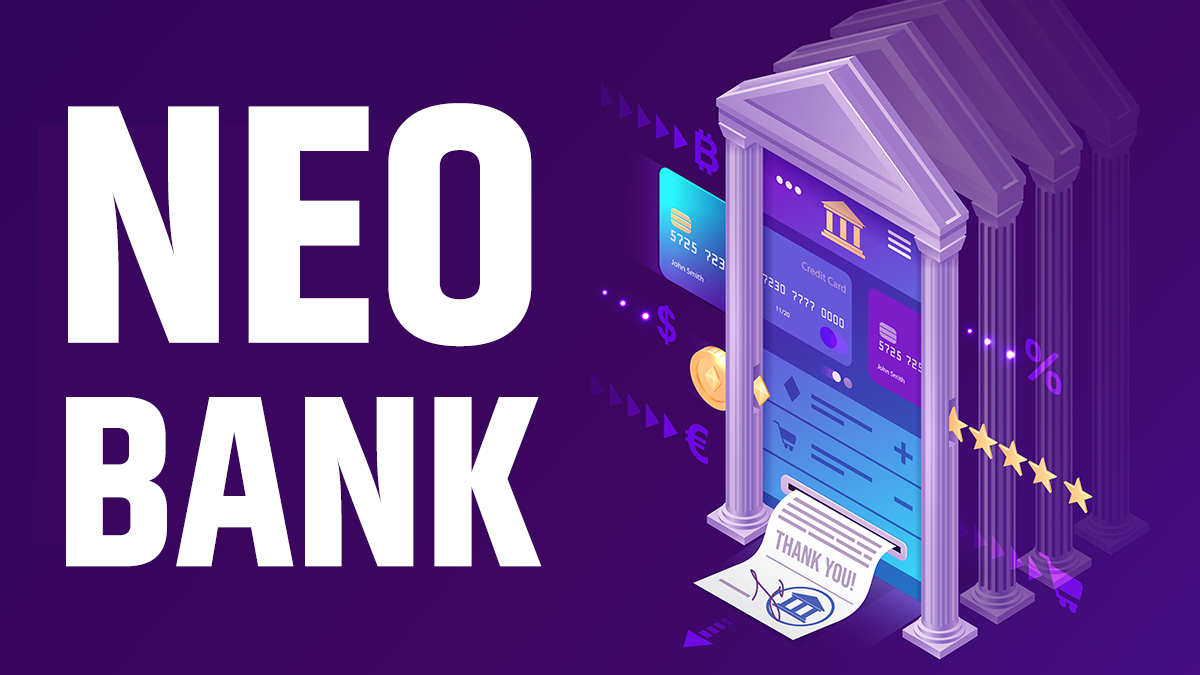Starting a neo bank business can be a rewarding endeavor. Neo banks, also known as digital banks, operate entirely online without any physical branches. This digital-only approach appeals to tech-savvy consumers looking for convenient and modern banking
solutions. I will guide you through the essential steps to start a neo bank business, sharing insights from my research and experience.

Understanding Neo Banks
Neo banks are financial institutions that offer a wide range of banking services, including savings accounts, checking accounts, loans, and payment services, through mobile apps and websites. Unlike traditional banks, they do not have physical branches,
which allows them to save on overhead costs and offer competitive rates and innovative services.
Market Research and Feasibility Study
Before diving into the neo banking business, conducting thorough market research is crucial. Understand your target audience, their banking needs, and preferences. Look at the existing players in the market and identify gaps you can fill.
- Identify Your Niche: Focus on a specific segment, such as millennials, freelancers, or small businesses. This will help you tailor your services and marketing efforts effectively.
- Competitive Analysis: Study your competitors. Analyze their strengths, weaknesses, pricing, and customer reviews. This can help you differentiate your offerings.
- Feasibility Study: Assess the financial feasibility of your business. Estimate the initial investment, ongoing operational costs, and potential revenue streams.
Business Plan Development
A solid business plan is essential for starting a neo bank. It should outline your business model, value proposition, target market, and financial projections. Here are key components:
- Executive Summary: Provide a brief overview of your business idea, goals, and strategies.
- Business Model: Describe how your neo bank will make money. This could be through interest on loans, subscription fees, transaction fees, or partnerships.
- Value Proposition: Explain what makes your neo bank unique. Highlight the benefits and features that will attract customers.
- Marketing and Sales Strategy: Outline how you will reach your target audience and convert them into customers. Use SEO, social media, content marketing, and partnerships.
- Financial Projections: Include detailed financial forecasts, including startup costs, revenue projections, and break-even analysis.
Legal and Regulatory Requirements
Compliance with legal and regulatory requirements is critical in the banking industry. Each country has its own set of regulations governing neo banks. Here are some steps to consider:
- Licensing: Obtain the necessary banking licenses. This process can be complex and time-consuming, requiring detailed documentation and compliance with regulatory standards.
- Compliance: Ensure your neo bank complies with anti-money laundering (AML) and know your customer (KYC) regulations. This involves implementing robust systems to verify customer identities and monitor transactions.
- Data Protection: Protect customer data by adhering to data protection laws like GDPR in Europe or CCPA in California. Implement strong cybersecurity measures to safeguard against breaches.
Technology Infrastructure
The success of a neo bank heavily relies on its technology infrastructure. You need a reliable, secure, and user-friendly platform to offer seamless banking services. Here are the key components:
- Core Banking System: Choose a robust core banking system that can handle transactions, manage accounts, and support various banking operations.
- Mobile App and Website: Develop an intuitive mobile app and website. Ensure they are user-friendly, secure, and provide a seamless experience across devices.
- Security: Implement top-notch security measures, including encryption, multi-factor authentication, and regular security audits. This will build customer trust and protect sensitive data.
- API Integration: Use APIs to integrate with third-party services and offer additional features like payment gateways, financial analytics, and more.
Building Partnerships
Partnerships are essential for the growth and success of a neo bank. Collaborate with various stakeholders to enhance your service offerings:
- Financial Institutions: Partner with established banks or financial institutions to access their infrastructure and expertise.
- Fintech Companies: Collaborate with fintech companies to offer innovative services like robo-advisors, personal finance management tools, and more.
- Payment Processors: Partner with payment processors to facilitate seamless transactions and expand your payment options.
- Regulatory Bodies: Maintain good relationships with regulatory bodies to stay updated on compliance requirements and industry standards.
Marketing and Customer Acquisition
Effective marketing is crucial to attract and retain customers. Use a mix of digital marketing strategies to reach your target audience:
- SEO: Optimize your website and content for search engines to drive organic traffic. Use relevant keywords, create quality content, and build backlinks.
- Social Media: Leverage social media platforms to engage with your audience, share updates, and run targeted ad campaigns.
- Content Marketing: Create valuable content, such as blog posts, videos, and infographics, to educate and attract potential customers.
- Email Marketing: Build an email list and send regular updates, offers, and newsletters to keep your audience engaged.
- Influencer Marketing: Collaborate with influencers to reach a broader audience and build credibility.
Customer Support and Experience
Providing excellent customer support is essential for retaining customers and building loyalty. Here are some tips:
- 24/7 Support: Offer round-the-clock customer support through various channels, including chat, email, and phone.
- User Feedback: Regularly collect user feedback to understand their needs and improve your services.
- Personalization: Use data analytics to offer personalized services and recommendations based on user behavior and preferences.
- Education: Educate your customers about your services, features, and how to use them effectively. This can be done through tutorials, webinars, and FAQs.
Monitoring and Scaling
Once your neo bank is up and running, continuous monitoring and scaling are crucial for long-term success:
- Performance Metrics: Track key performance metrics like customer acquisition cost, customer retention rate, and transaction volumes to assess your bank’s performance.
- User Analytics: Use analytics tools to monitor user behavior, identify trends, and make data-driven decisions.
- Scalability: Ensure your technology infrastructure can scale as your customer base grows. Invest in scalable solutions and continuously update your systems.
- Innovation: Stay updated on industry trends and continuously innovate to offer new features and services that meet evolving customer needs.
Business Model of Neo Banks?
Core Components of a Neo Bank Business Model
- Revenue Streams
- Cost Structure
- Customer Acquisition and Retention
- Technology Infrastructure
- Partnerships and Alliances
- Regulatory Compliance
Revenue Streams
Neo banks have several revenue streams, each contributing to their profitability. These include:
- Interchange Fees: Neo banks earn interchange fees whenever their customers use their debit or credit cards for transactions. These fees are paid by merchants and can vary depending on the transaction type and volume.
- Subscription Fees: Many neo banks offer premium accounts with additional features like higher interest rates, financial planning tools, and exclusive offers. Customers pay a monthly or annual subscription fee for these services.
- Interest Income: Neo banks earn interest on loans they provide to customers, such as personal loans, business loans, and overdrafts. The difference between the interest paid to depositors and the interest earned on loans is known as the
net interest margin. - Foreign Exchange Fees: Some neo banks charge fees for currency exchange services. These fees are typically lower than those charged by traditional banks, making neo banks an attractive option for international travelers and businesses.
- Referral Fees and Partnerships: Neo banks often partner with third-party service providers like insurance companies, investment platforms, and payment processors. They earn referral fees or commissions for directing their customers to these
services. - Overdraft Fees: While many neo banks promote themselves as fee-free, some still charge for overdraft protection or when customers overdraw their accounts.
Cost Structure
Neo banks benefit from a lower cost structure compared to traditional banks. Here are the main cost components:
- Technology and Infrastructure: A significant portion of the budget goes into developing and maintaining the digital platform, including mobile apps, websites, and backend systems. Regular updates and cybersecurity measures are also critical
expenses. - Customer Support: Providing high-quality customer service through various channels, such as chat, email, and phone, is essential. While digital channels can be cost-effective, human support is still necessary for complex issues.
- Regulatory Compliance: Complying with banking regulations involves costs related to legal counsel, compliance staff, and necessary technological solutions to meet regulatory standards like KYC (Know Your Customer) and AML (Anti-Money Laundering).
- Marketing and Customer Acquisition: Significant funds are allocated to marketing campaigns, partnerships, and promotions to acquire and retain customers. Digital marketing strategies, including SEO, social media, and influencer marketing,
play a crucial role. - Operational Costs: These include expenses related to day-to-day operations, such as employee salaries, office space for the team, and other administrative costs.
Customer Acquisition and Retention
Neo banks focus heavily on customer acquisition and retention through innovative strategies:
- User-Friendly Interface: A seamless and intuitive user interface is key to attracting tech-savvy customers. Neo banks invest in UX/UI design to ensure a smooth banking experience.
- Personalized Services: Using data analytics, neo banks offer personalized financial advice, budgeting tools, and spending insights to enhance customer satisfaction and loyalty.
- Competitive Rates and Fees: Offering competitive interest rates on savings accounts and low or no fees on transactions helps neo banks attract price-sensitive customers.
- Incentives and Rewards: Cashback offers, rewards programs, and referral bonuses are commonly used to incentivize customers to join and stay with the neo bank.
Technology Infrastructure
Technology is at the heart of a neo bank’s business model. The following components are crucial:
- Core Banking System: A robust core banking system is essential for handling transactions, managing accounts, and supporting various banking operations. It must be scalable, secure, and efficient.
- Mobile and Web Applications: High-quality mobile and web applications are vital for customer engagement. These apps should offer a wide range of services, from account management to loan applications, and ensure a seamless user experience.
- APIs and Integrations: APIs (Application Programming Interfaces) allow neo banks to integrate with third-party services, offering customers additional features like payment gateways, financial analytics, and more.
- Cybersecurity: Implementing advanced cybersecurity measures, including encryption, multi-factor authentication, and regular security audits, is crucial to protect customer data and build trust.
Partnerships and Alliances
Strategic partnerships and alliances play a vital role in the neo bank business model:
- Fintech Collaborations: Partnering with fintech companies can enhance service offerings, such as providing robo-advisors, investment platforms, or innovative payment solutions.
- Banking Institutions: Collaborations with traditional banks can provide access to banking infrastructure, such as ATMs, and help meet regulatory requirements.
- Payment Processors: Working with payment processors ensures seamless transaction processing and expands payment options for customers.
- Regulatory Bodies: Maintaining good relationships with regulatory bodies is essential for staying updated on compliance requirements and industry standards.
Conclusion
Starting a neo bank business involves careful planning, extensive research, and adherence to regulatory requirements. By focusing on a specific niche, developing a robust technology infrastructure, and providing exceptional customer service, you can build
a successful neo bank. As I found in my research, the neo banking industry is growing rapidly, with significant opportunities for innovation and growth. Following these steps will help you navigate the challenges and set up a thriving neo bank business.
Remember, the key to success in the neo banking business is staying adaptable and continuously evolving to meet the changing needs of your customers.




